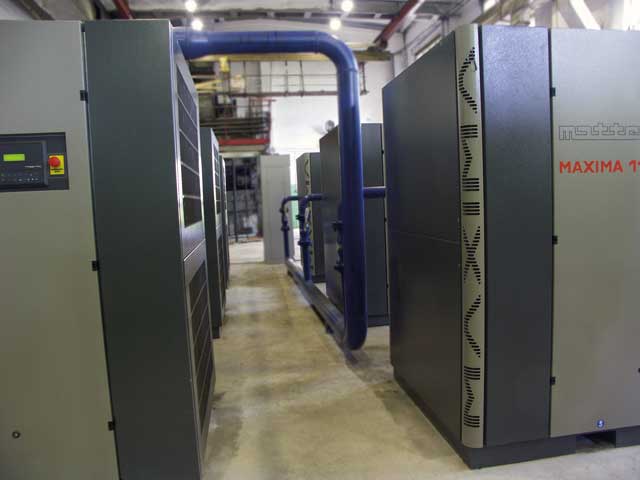For manufacturers throughout the UK, compressed air is just as important as gas and electricity – yet this utility doesn’t receive the same attention. Mattei managing director Andy Jones asks why compressor maintenance isn’t always taken seriously.

A poorly maintained compressor won’t perform properly or efficiently, affecting production and increasing running costs and carbon emissions. Not only that, but neglecting to maintain a compressor can result in serious safety hazards, including, in very extreme cases, fires or explosions.
Executing a compressor service schedule and maintenance regime should be very straightforward, with official guidance available for factory and plant managers to follow. Compressor manufacturers will supply specific service intervals for their machines, and, alongside this, a compressor should have a Written Scheme of Examination, which outlines the regular inspections required.
The document will contain a wide range of information, including the parts of the system that need to be examined, the nature of the examination required, the preparatory work needed and the maximum interval allowed between examinations.
It’s important to have a maintenance plan in place for the whole compressed air system, not just the compressor. This should include checking the pipework for rust, corrosion and, most important, leaks.
In many systems, over 30% of air generated is wasted through leaks – but it is simple and cost-effective to identify and rectify them. Leak detection surveys should be carried out on an annual basis, and always before a new compressor is installed.

By opting for a vane air compressor such as Mattei’s over a screw compressor from the outset, maintenance costs can be reduced from the start. For example, the absence of roller bearings in a vane compressor means lower maintenance costs and a reduced risk of component failure. Some vane compressors have been known to run for over 200,000 hours without the need to replace the white-metal bushes used in this type of equipment. This presents a serious contrast with roller bearings, which are typically required to be changed at every 30,000-40,000 hours.
Many leakage issues are also accounted for by choosing vane over screw. “Blowholes”, which occur between the rotors and allow air under high pressure to be driven back to the low pressure suction end, are inherent in screw compressors. To compensate for these leakage paths, screw compressors need to run at high speeds. The design of rotary vane compressors eliminates blowholes, which means they can operate at low speeds from a direct drive coupling. This in turn improves energy efficiency and reduces power consumption.
Because of the integrated nature of the air-end, most vane compressors have fewer hydraulic hoses, further minimising the risk of leakage and breakdowns.
Ultimately, it is vital for businesses to adopt a preventive approach to preserve their compressed air systems. Adhering to this from the outset reduces problems in the future and helps to make sure that the compressed air system can be relied on.
Mattei offers a variety of service and maintenance packages for most makes of compressors and can offer assistance if a Written Scheme of Examination is required. As a member of BCAS with a SafeContractor accreditation, Mattei is committed to improving health and safety practices in the compressed air industry.
For further information visit www.mattei.co.uk.

